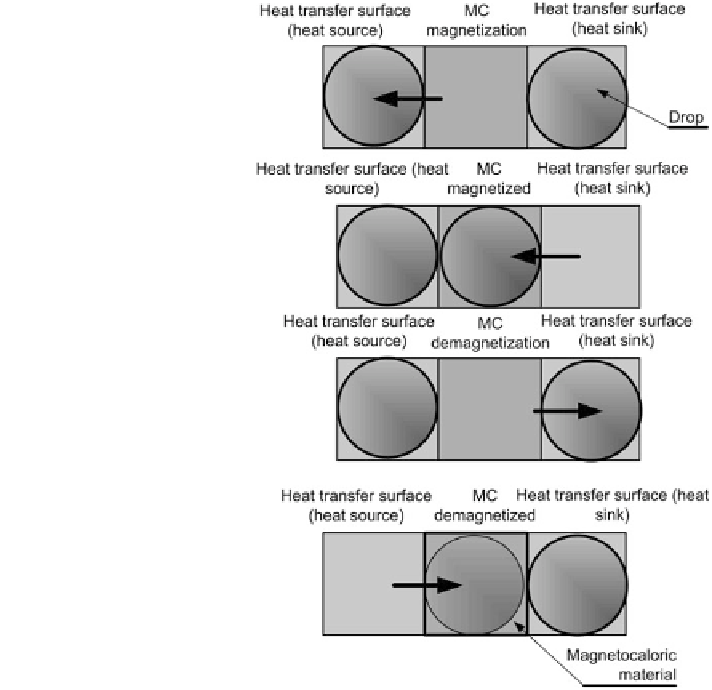Environmental Engineering Reference
In-Depth Information
Fig. 6.18 A simple example
of the application of the
EWOD principle in the
capillary flow of drops, used
as the thermal diode
mechanism in magnetic
refrigeration
process in this particular case). When the magnetocaloric material is being mag-
netized, both drops have a position on the surface, which corresponds to the heat
sink and the heat source, respectively. The magnetocaloric material heats up, so the
heat
ux needs to be transferred to the drop on the right-hand side. Therefore, in the
process of iso
fl
eld cooling, the drop on the right-hand side moves on the surface of
the magnetocaloric material, absorbs the heat and moves back to the heat sink
surface. In the demagnetization process both drops are at the position on the surface
of the heat sink and the heat source. The magnetocaloric material cools, and the
drop on the left-hand side moves on the surface of the magnetocaloric material in
order to be cooled. Later, it moves back to the initial position in order to accept heat
from the heat source.
This example is very primitive and does not concern some valuable solution;
however, its purpose it to indicate to the reader a way of applying the micro-
fl
uidic
thermal diode mechanism in magnetic refrigeration.
More information on electrohydrodynamic and potential mechanisms can be
found in work of Zhao and Yang [
95
] and Squires and Quake [
96
].

Search WWH ::

Custom Search